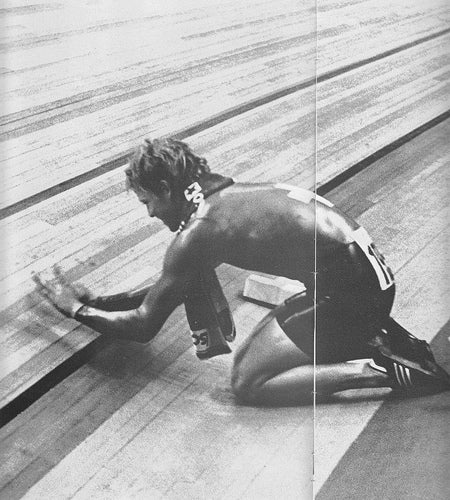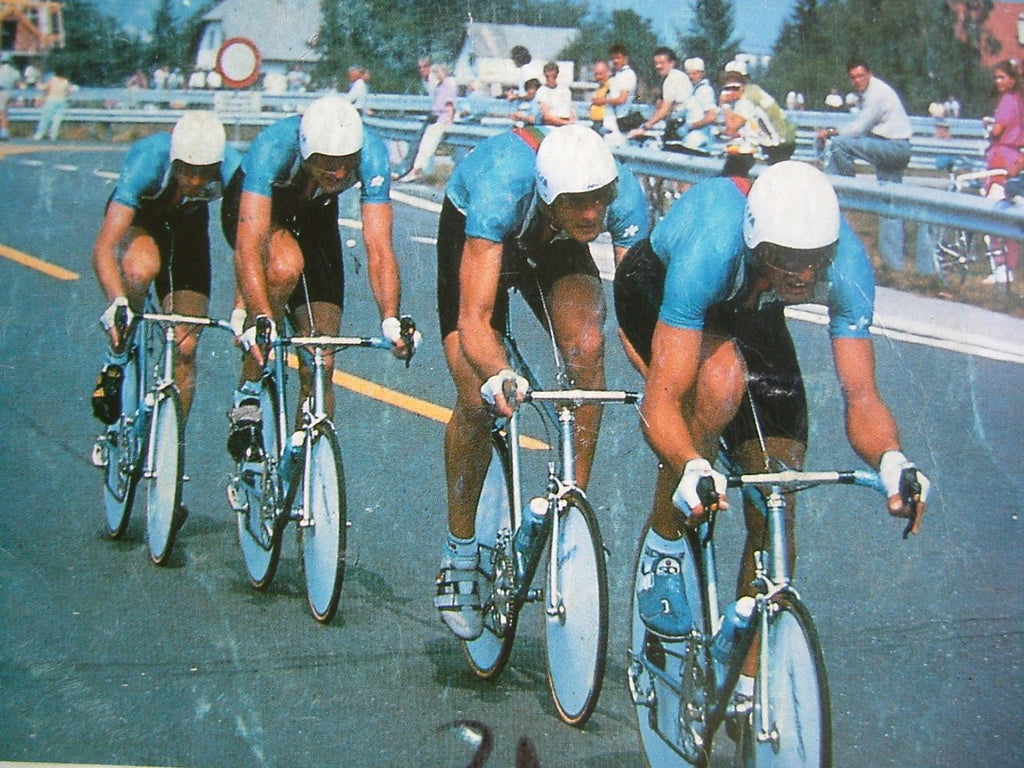Unveiled at the '78 Track World Championship, the skinsuit revolutionised rider race wear. 
At the Munich Olympic Velodrome in 1978, lateral thinking Swiss engineer, Tony Maier-Moussa, unveiled his latest creation: Daniel Gisiger of Switzerland riding in the first anatomical skinsuit. Whilst Gisiger's results didn't garner much attention, his one-piece suit certainly did, and the first Assos skinsuit was born.
The skinsuit: a pro cyclists essential
The skinsuit feels as if it has been around forever. A one-piece, pocket-less, form-fitting garment, it is made from a mix of Lycra with padded chamois and long front zip and is worn throughout the world by the amateur to the elite in disciplines from time trials to cyclo-cross.
And yet, there had to be a time before skinsuits, when wool and baggy jerseys reigned supreme.

It started with components
Rewind to 1976 when Assos founder, Tony Maier-Moussa, was working on creating the first carbon bicycle frame. His aim was to make an aerodynamic frame to reduce drag using lighter materials. He poured all the money he earned from being Europe’s first Shimano distributor into developing his own components. There were aerodynamic rims, spokes, saddles, a chainset, a bottom bracket, and his ultimate goal: a carbon track frame.

The body is a barrier
He realised that spending hours trying to make the bicycle as aerodynamic as possible was only part of the issue. The rider atop the bike was the biggest barrier to being as aerodynamic as possible.
In the summer of 1976, Assos presented the first pair of shorts made from DuPont Lycra. The Swiss component maker sponsored a small race team and when Maier-Moussa asked the riders to pull on his shiny black shorts, it took a lot of convincing to get the racers out of the wool.
"He found the surface structure of skin was not the ideal medium for air to flow quickly over. He clothed his test riders in full lycra one-piece suit..."
Naked bike riders
His next invention was visionary. Early work at the Zurich Technical University by Maier-Moussa found that gaps between your shorts and your jersey basically act like miniature sails, catching wind and pulling you backwards while you lose valuable seconds. So he put a rider on a bike without any clothes. He found the surface structure of skin was not the ideal medium for air to flow quickly over. He clothed his test riders in full Lycra one-piece suits, with long sleeves and integrated hand loops to cover the skin. The material on the torso was stitched almost seamlessly to his Lycra shorts.

1972 - Assos founder begins engineers components for aerodynamic edge
1976 - Assos first to produce Lycra shorts
1977 - Assos test fabric and develop suits
1978 - Daniel Gisiger debuts first skinsuit at World Championships
1980 - Every rider competing in track cycling at Moscow Olympics wears skinsuit
1984 - Skinsuit used in road race event at Los Angeles Olympics
1987 - Italian team win bronze using Assos Cinto suit
The Assos Chronosuit is launched
The Chronosuit was unveiled at the World Track Championships in '78 and shortly after professional cyclists and teams came in their droves. Manufacturers scrambled to create their own versions.
Two years later at the 1980 Moscow Olympics, every rider to take to the track wore a skinsuit. In most cases it was Assos that made skinsuits for most of the riders and applied sponsor branding. By the 1984 Los Angeles Olympics, the skinsuit had transitioned onto the road.
Assos pushed their original design further. At the 1987 World Championship in Ronse, the Italian time-trial quartet claimed bronze riding in their Assos skinsuits. Their suit featured the notorious Cinto, a steel cable that attached the rider to the stem to hold them in a more aerodynamic position. It enabled the rider to generate more leverage against the pedals —and was instantly banned by the UCI. 
The Assos Lycra shorts and suit were almost triple the cost of a pair of wool shorts, which, compared with a wind-cheating carbon bike, was a worthwhile investment. Although there are various iterations of the cycling skinsuit, the principle of the garment has remained the same. Thirty-seven years later, Maier-Moussa's innovative ethos has remained integral to the fabric of performance cycling.
